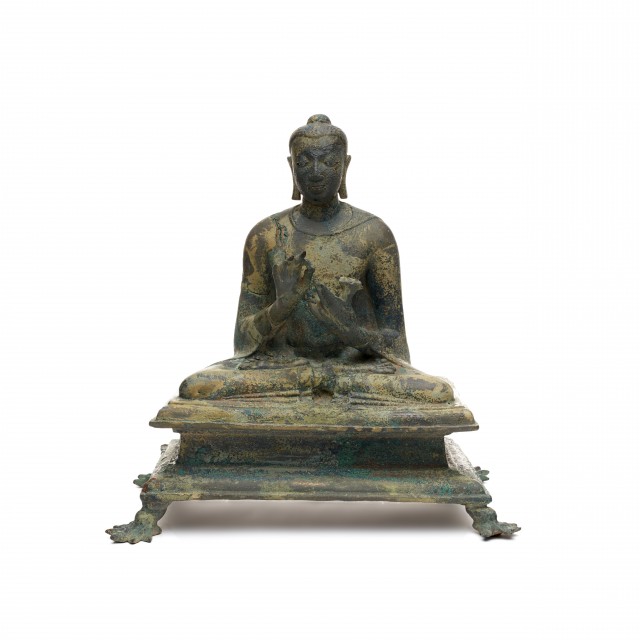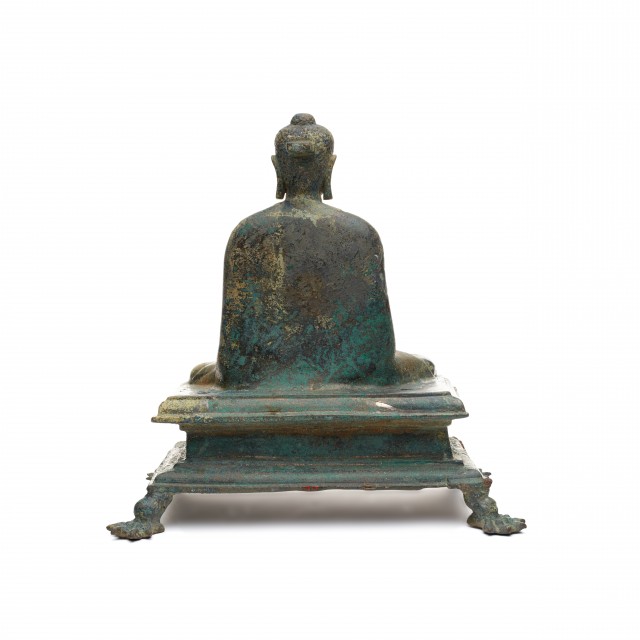
Seated Buddha in Dharmachakra-mudra, probably the Buddha Shakyamuni

Photography by Synthescape, Digital image © Asia Society

Photography by Synthescape, Digital image © Asia Society
Seated Buddha in Dharmachakra-mudra, probably the Buddha Shakyamuni
Ca. late 5th-early 6th century
India
Copper alloy inlaid with silver and copper
H. 14 1/8 x W. 14 x D. 9 in. (H. 35.9 x 35.6 x 22.9 cm)
Asia Society, New York: Mr. and Mrs. John D. Rockefeller 3rd Collection, 1979.7
Provenance
John D. Rockefeller 3rd, New York, NY; acquired from Heeramaneck Galleries, New York, NY, January 1970.
The Asia Society, New York, NY, bequest of John D. Rockefeller 3rd, New York, NY, 1979.
Licensing inquiries
This Buddha exhibits many characteristics that indicate his perfected and supernormal nature. These include a bump atop the head signifying his expanded wisdom (ushnisha) and downcast eyes symbolizing his understanding and mastery of meditation. His elongated earlobes refer to his early life as Prince Siddhartha, when he wore heavy earrings; these holes remind the faithful that they, too, should reject worldly goods and pleasures. The Buddha sits in the posture of meditation, his chest swollen with indrawn breath, and performs the teaching gesture (dharmachakra mudra). A u-shaped fixture on the back of his head and two slots in the base were used to attach a large body halo to the sculpture.
The Buddha sits on an inscribed lion-footed throne. The eyes are inlaid with silver while the lips are inlaid with copper. The pedestal type is similar to that of the Kansas City Standing Buddha from Dhanesar Khera (Master Bronzes of India, [exhibition catalogue] (Chicago, 1965), no. 3).
The inscription, in Brahmi, is the so-called Buddhist creed. Loosely translated, it reads: "All those phenomena which are born of causes, Tathagata [Buddha] spoke indeed of all those causes, and their cessation [was also preached by him]."


